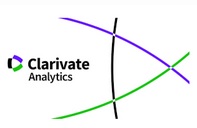Reconceptualising workplace resilience - A cross-disciplinary perspective.
Abstract
Stressful situations, performance pressure, and setbacks are part of contemporary organizational life. The dynamic nature of technological advances and globalisation of business leads to tougher competitive pressures and constant change. People’s responses to these challenging circumstances vary widely. Some bounce back and adapt to increasing challenges and adversity, others’ healthy functioning is significantly impaired. Even though resilience is recognised as a crucial issue in the workplace, the rates of new cases of work-related stress and depression have remained broadly flat for more than 10 years. Resilience research within Applied Psychology typically focuses on the psychological domain of a person’s functioning. This means that also resilience trainings or interventions focus on only one area. The present paper aims to build a comprehensive conceptualization of workplace resilience ultimately to assist in informing targeted intervention and in developing a model to move the research area forward as a whole. A cross-disciplinary understanding of and approach to individual resilience in the workplace would allow to better understand the mechanism of why some people bounce back from adverse events whereas others’ well-being declines. We propose a resilience framework with antecedents considering psychological (cognitive and emotional) and physiological correlates (cardiovascular, gastrointestinal and metabolic).
Downloads
References
Blascovich, J., & Mendes, W. B. (2000). Challenge and threat appraisals: The role of affective cues. In J. P. Forgas (Ed.), Feeling and thinking: The role of affect in social cognition (pp. 59-82). Cambridge, England: Cambridge University Press.
Cartwright, S., & Cooper, C. L. (2009). The Oxford Handbook of Organizational Well-Being. Oxford, England: Oxford University Press.
Castellano-Tejedor, C., Blasco-Blasco, T., Pérez-Campdepadrós, M., & Capdevila-Ortís, L. (2014). Making sense of resilience: a review from the field of pediatric psycho-oncology and a proposal of a model for its study. Anales de Psicología, 30(3), 865-877. doi: 10.6018/analesps.30.3.154581
Clarke, S., Murphy, E., O’Sullivan, O., Lucey, A., Humphreys, M., Hogan, A.,..., Cotter, P. D. (2014). Exercise and associated dietary extremes impact on gut microbial diversity. Gut, 63, 1913-1920. doi: 10.1136/gutjnl-2013-306541
Daniels K. (2011). Stress and well-being are still issues and something still needs to be done: Or why agency and interpretation are important for policy and practice. In: G. P. Hodgkinso & J. K. Ford (Eds.), Review of Industrial and Organizational Psychology (pp.1-45). Chichester, England: John Wiley& Sons.
Demerouti, E., Bakker, A. B., Nachreiner, F., & Schaufeli, W. B. (2001). The job demands- resources model of burnout. Journal of Applied Psychology, 86, 499-512. doi: 10.1037/0021-9010.86.3.499
Depres, J. P. (2006). Abdominal obesity: the most prevalent cause of the metabolic syndrome and related cardiometabolic risk. European Heart Journal Supplements, 8(Sb), B4-B12. doi: 10.1093/eurheartj/sul002.
Dewe, P., & Cooper, C. (2012). Well-being and work. Towards a balanced agenda. Basingstoke, England: Palgrave MacMillan.
Dienstbier, R. A. (1989). Arousal and Physiological Toughness: Implications for Mental and Physical Health. Psychological Review, 96(1), 84-100. doi: 10.1037/0033-295X.96.1.84
Diener, E. (1994). Assessing subjective well-being: Progress and opportunities. Social Indicators Research, 31, 103-157. doi: 10.1007/BF01207052
Doring, T., Vieweger, A., Pautasso, M., Vaarst. M., Finckh, M., & Wolfe, M. (2015). Resilience as a universal criterion of health. Journal of the Science of Food and Agriculture, 95, 455-465. doi: 10.1002/jsfa.6539
Friborg, O., Hjemdal, O., Rosenvinge, J. H., & Martinussen, M. (2003). A new rating scale for adult resilience: What are the central protective resources behind healthy adjustment? International Journal of Methods in Psychiatric Research, 12, 65-76. doi: 10.1002/mpr.143
Fredrickson, B. L. (2001). The Role of Positive Emotions in Positive Psychology: The Broaden-and-Build Theory of Positive Emotions. American Psychologist, 56, 218-226. doi: 10.1037/0003-066X.56.3.218
Groppel, J. (2000). The Corporate Athlete. New York, NY: John Wiley and Sons.
Hackman, J. R., & Oldham, G. R. (1975). Development of the job diagnostic survey. Journal of Applied Psychology, 60(2), 159-170. doi: 10.1037/h0076546
Halson, S., Lancaster, G., Jeukendrup, A., & Gleeson, M. (2003). Immunological responses to overreaching in cyclists. Medicine and Science in Sports and Exercise, 35(5), 854-861. doi: 10.1249/01.MSS.0000064964.80040.E9
Hamer, M., Endrighi, R., Venuraju, S. M., Lahiri, A., & Steptoe, A. (2012). Cortisol Responses to Mental Stress and the Progression of Coronary Artery Calcification in Healthy Men and Women. PLOS One, 7(2), e31356. doi: 10.1371/journal.pone.0031356
Health & Safety Executive (2016). Work related stress, anxiety and depression statistics in Great Britain 2016. Retrieved from http://www.hse.gov.uk/statistics/causdis/stress/
Herzberg, F. (1959). The motivation to work. New York, NY: John Wiley and Sons.
Hobfoll, S. E., Hall, B. J., Canetti-Nisim, D., Galea, S., Johnson, R. J., & Palmieri, P. A. (2007). Refining our understanding of traumatic growth in the face of terrorism: Moving from meaning cognitions to doing what is meaningful. Applied Psychology: An International Review, 56(3), 345-366. doi: 10.1111/j.1464- 0597.2007.00292.x
Hobfoll, S. E. (1989). Conservation of resources: A new attempt at conceptualizing stress. American Psychologist, 44(3), 513-524. doi: 10.1037/0003-066X.44.3.513
Irwin, M., & Vedhara, K. (2005). Human Psychoneuroimmunology. Oxford, England: Oxford University Press.
Issurin, V. (2010). New horizons for the methodology and physiology of training periodization. Sports Medicine, 40(3), 189-206. doi: 10.2165/11319770-000000000-00000
Jackson, D., Firtko, A., & Edenborough, M. (2007). Personal resilience as a strategy for surviving and thriving in the face of workplace adversity: A literature review. Journal of Advanced Nursing, 60, 1-9. doi: 10.1111/j.1365- 2648.2007.04412.x
Johnson, J. V., & Hall, E. M. (1988). Job strain, work place social support, and cardiovascular disease: A cross-sectional study of a random sample of the Swedish working population. American Journal of Public Health, 78(10), 1336-1342. doi: 10.2105/ajph.78.10.1336
Jones, G. (2002). What is this thing called mental toughness? An investigation of elite sport performers. Journal of Applied Sport Psychology, 14, 205-218. doi: 10.1080/10413200290103509
Karasek, R., & Theorell, T. (1990). Healthy work: Stress, productivity, and the reconstruction of working life. NewYork, NY: Basic Books.
Kelli, H. M., Kassas, I., & Lattouf, O. (2015). Cardio metabolic syndrome: a global epidemic. Journal Diabetes Metabolism, 6(513), 1-14. doi: 10.4172/2155-6156.1000513
King, D. D., Newman, A., & Luthans, F. (2016). Not if, but when we need resilience in the workplace. Journal of Organizational Behavior, 37, 782-786. doi: 10.1002/job.2063
Leiter, M. P., & Maslach, C. (2004). Areas of worklife: A structured approach to organizational predictors of job burnout. In P. L. Perrewe & D. C. Ganster (Eds.), Research in occupational stress and well-being (Vol. 3, 91-134). Oxford, England: Elsevier.
Linnenluecke, M. K. (2017). Resilience in Business and Management Research: A Review of Influential Publications and a Research Agenda. International Journal of Management Reviews, 19, 4-30. doi: 10.1111/ijmr.12076
López-Sánchez, G. F., López-Sánchez, L., & Díaz-Suárez, A. (2016). Effects of a physical activity program on the sleep quality of schoolchildren with ADHD. SPORT TK: Revista Euroamericana de Ciencias del Deporte, 5(1), 19-26.
López-Sánchez, G. F., González-Víllora, S., & Díaz-Suárez, A. (2016). Level of habitual physical activity in children and adolescents from the Region of Murcia (Spain). SpringerPlus, 5:386, 1-6. doi: 10.1186/s40064-016-2033-8
Luthans F. Youssef, C. M., & Avolio, B. J. (2007). Psychological capital. Oxford, England: Oxford University Press.
Morgeson, F. P., & Humphrey, S. E. (2006). The work design questionnaire (WDQ): Developing and validating a comprehensive measure for assessing job design and the nature of work. Journal of Applied Psychology, 91(6), 1321-1339. doi: 10.1037/0021-9010.91.6.1321
Obrist, P. A. (1976). The cardiovascular‐behavioral interaction—As it appears today. Psychophysiology, 13(2), 95-107. doi:10.1111/j.1469-8986.1976.tb00081
Office for National Statistics (2017). Measuring National Well-being. Retrieved from http://www.ons.gov.uk/ons/guide-method/user-guidance/well- being/index.html
Robertson, I. T., Cooper, C. L., Sarkar, M., & Curran, T. (2015). Resilience training in the workplace from 2003 to 2014: A systematic review. Journal of Occupational and Organizational Psychology, 88(3), 533-562. doi: 10.1111/joop.12120
Rook, C., Hellwig, T., & Florent-Tracy, E. (2015). Executive Stress – Taboo or Opportunity for Change? In: M. F. R. Kets de Vries, K. Korotov, E. Florent-Treacy, & C. Rook (Eds.), Coach and Couch. The Psychology of Making Better Leaders. 2nd Ed. (pp. 230-240). Basingstoke, England: Palgrave-Macmillan.
Richardson, G. E., Neiger, B. L., Jensen, S., & Kumpfer, K. L. (1990). The resiliency model. Health Education, 21(6), 33-39. doi: 10.1080/00970050.1990.10614589
Rothman, S., & Mattson, M. (2013). Activity-dependent, stress-responsive BDNF signalling and the quest for optimal brain health and resilience throughout the lifespan. Neuroscience, 6(239), 228-240. doi:10.1016/j.neuroscience.2012.10.014
Salmon, P. (2001). Effects of physical exercise on anxiety, depression, and sensitivity to stress: A unifying theory. Clinical Psychology Review, 21, 33-62. doi: 10.1016/S0272-7358(99)00032-X
Serrano-Gisbert, M. F., Garcés-de-Los-Fayos, E. J., & Hidalgo-Montesinos, M. D. (2008). Burnout en fisioterapeutas españoles. Psicothema, 20(3), 361-368.
Shephard, R. (2001). Chronic Fatigue Syndrome: An update. Sports Medicine, 31(3), 167-194. doi: 10.2165/00007256-200131030-00003
Silverman, M., & Deuster, P. (2014). Biological mechanisms underlying the role of physical fitness in health and resilience. Interface Focus, 4, 1-12. doi: 10.1098/rsfs.2014.0040
Smith, L., Ekelund, U., & Hamer, M. (2015). The potential yield of non-exercise physical activity energy expenditure in public health. Sports Medicine, 45(4), 449-52. doi: 10.1007/s40279-015-0310-2.
Smith, L. (2003a). Overtraining, excessive exercise and altered immunity. Is this a T Helper-1 versus T Helper-2 lymphocyte response? Sports Medicine, 33(5), 347-364. doi: 10.2165/00007256-200333050-00002
Smith, D. (2003b). A framework for understanding the training process leading to elite performance. Sports Medicine, 33(15), 1103-1126. doi: 10.2165/00007256-200333150-00003
Southwick, S., & Charney, D. (2015) Resilience: The science of mastering life’s greatest challenges. Cambridge, England: Cambridge University Press.
Tlucakova, L., Ruzbarska, B., Cech, P., Kacur, P., Zvonar, M., & Gimunova, M. (2016). Association between physical activity and body composition of high school students. SPORT TK-Revista Euroamericana de Ciencias del Deporte, 5(2), 69-75.
Tugade, M. M., & Fredrickson, B. L. (2004). Resilient individuals use positive emotions to bounce back from negative emotional experiences. Journal of Personality and Social Psychology, 86, 320-333. doi: 10.1037/0022-3514.86.2.320
van der Doef, M., & Maes, S. (1999). The job demand-control (-support) model and psychological well-being: A review of 20 years of empirical research. Work &Stress, 13(2), 87-114. doi: 10.1037/0022-3514.86.2.320
Vespalec, T., Pavlík, J., Zvonař, M. & Zeman, T. (2016). Physical activity of Czech schoolchildren in the autumn season. Journal of Human Sport and Exercise, 11(Proc1), S137-S145. doi:10.14198/jhse.2016.11.Proc1.04
Vespalec, T., & Zvonař, M. (2016). Comparison of physical activity and health status in the specified focus group of population of middle-aged and older. In M. Zvonař & Z Sajdlová (Eds.), 10th International Conference On Kinanthropology "Sport and Quality of Life" (pp. 216-231). Brno, Czech Republic: Masarykova Univerzita.
von Bonsdorff, M. B., Strandberg, A., von Bonsdorff M., Törmäkangas, T., Pitkälä K. H., & Strandberg, T. E. (2017). Working hours and sleep duration in midlife as determinants of health-related quality of life among older businessmen. Age Ageing, 46(1), 108-112. doi: 10.1093/ageing/afw178
Warr, P. (2013). Jobs and job-holders: Two sources of happiness and unhappiness. In S. David, I. Boniwell & A. Conley Ayers (Eds.), Oxford handbook of happiness (pp. 733-750). Oxford, England: Oxford University Press.
Warr, P. (2003). Well-being and the workplace. In D. Kahnemann, E. Diener & N. Schwarz (Eds.), Well-being. The foundations of hedonic psychology (pp. 392-412). New York, NY: Russell Sage Foundation.
Warr, P., & Clapperton, G. (2009). The joy of work? Jobs, happiness and you. Hove, England: Routledge.
Windle, G. (2011). Psychological resilience as a resource for later life. Gerontologist, 51, 331-331. doi: 10.1093/geront/gns068
Zautra, A., Hall, J., & Murray, K. (2008). Resilience: a new integrative approach to health and mental health research. Health Psychology Review, 2(1), 41-64. doi: 10.1080/17437190802298568
Zurita-Ortega, F., Espejo-Garcés, T., Cofré-Boladós, C., Martínez-Martínez, A., Castro-Sánchez, M., & Chacón-Cuberos, R. (2016). Influencia de la actividad física sobre la resiliencia en adultos con dolor de hombro. SPORT TK-Revista EuroAmericana de Ciencias del Deporte, 5(2), 53-58.
The works published in this journal are subject to the following terms:
1. The Publications Service of the University of Murcia (the publisher) retains the property rights (copyright) of published works, and encourages and enables the reuse of the same under the license specified in paragraph 2.
© Servicio de Publicaciones, Universidad de Murcia, 2022
2. The works are published in the online edition of the journal under a Creative Commons Reconocimiento-CompartirIgual 4.0 (legal text). You can copy, use, distribute, transmit and publicly display, provided that: i) you cite the author and the original source of publication (journal, editorial and URL of the work), ii) are not used for commercial purposes, iii ) mentions the existence and specifications of this license.
This work is licensed under a Creative Commons Attribution-ShareAlike 4.0 International License.
3. Conditions of self-archiving. Is allowed and encouraged the authors to disseminate electronically pre-print versions (version before being evaluated and sent to the journal) and / or post-print (version reviewed and accepted for publication) of their works before publication, as it encourages its earliest circulation and diffusion and thus a possible increase in its citation and scope between the academic community. RoMEO Color: Green.















